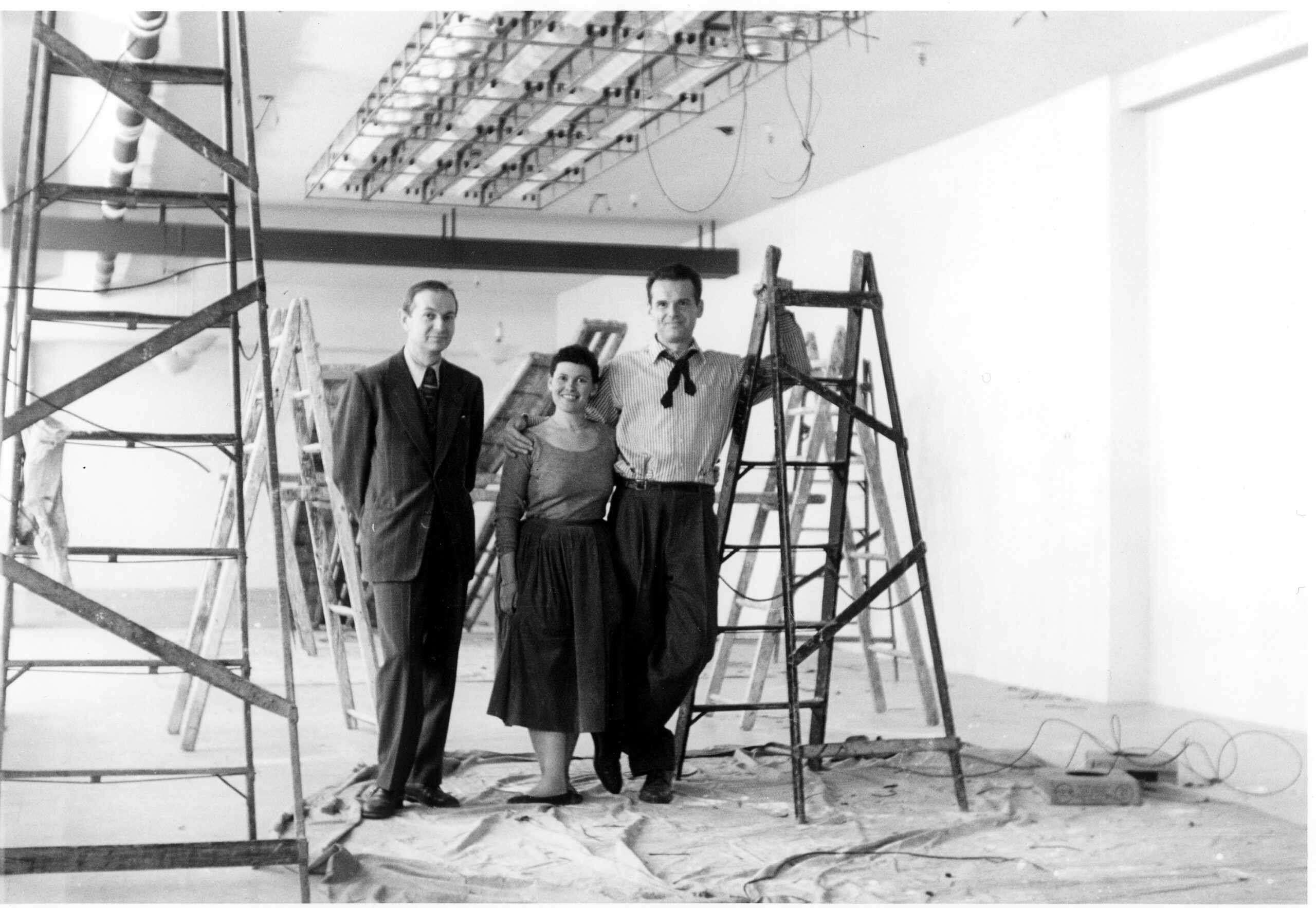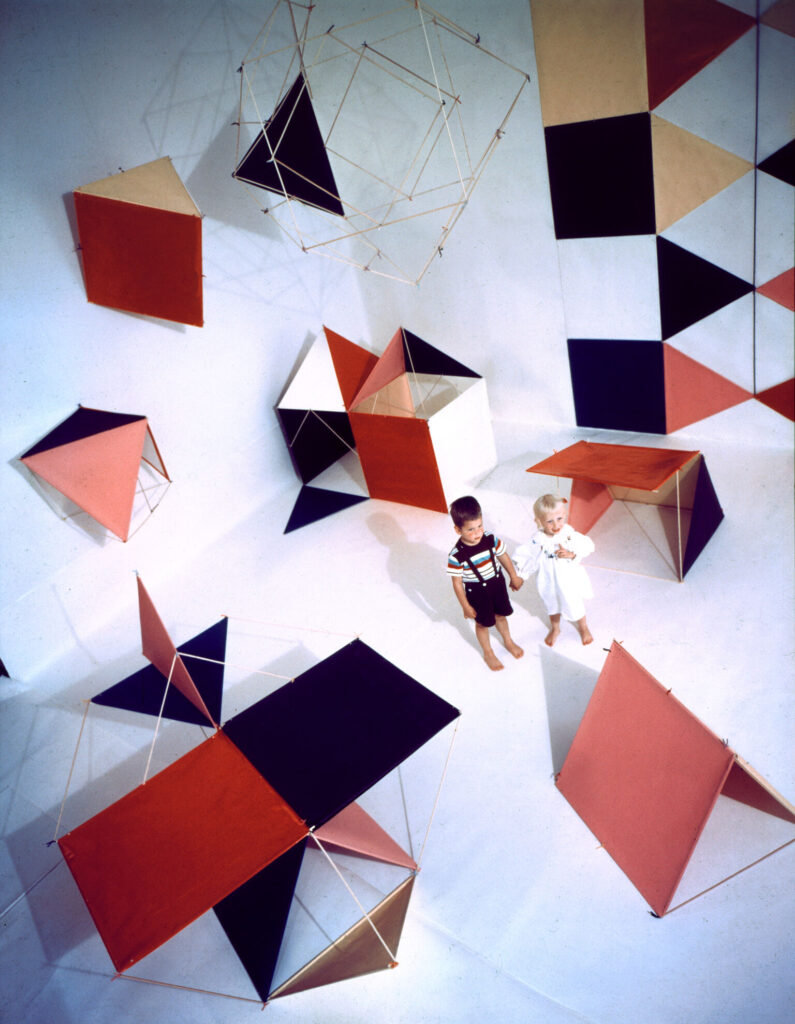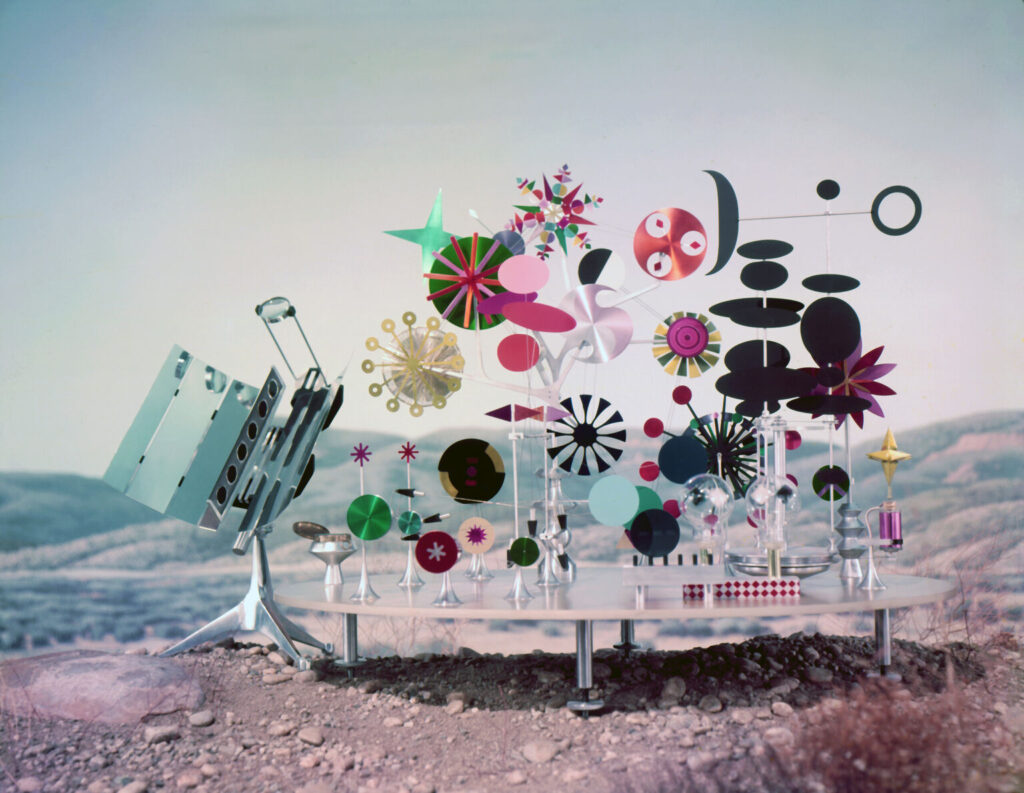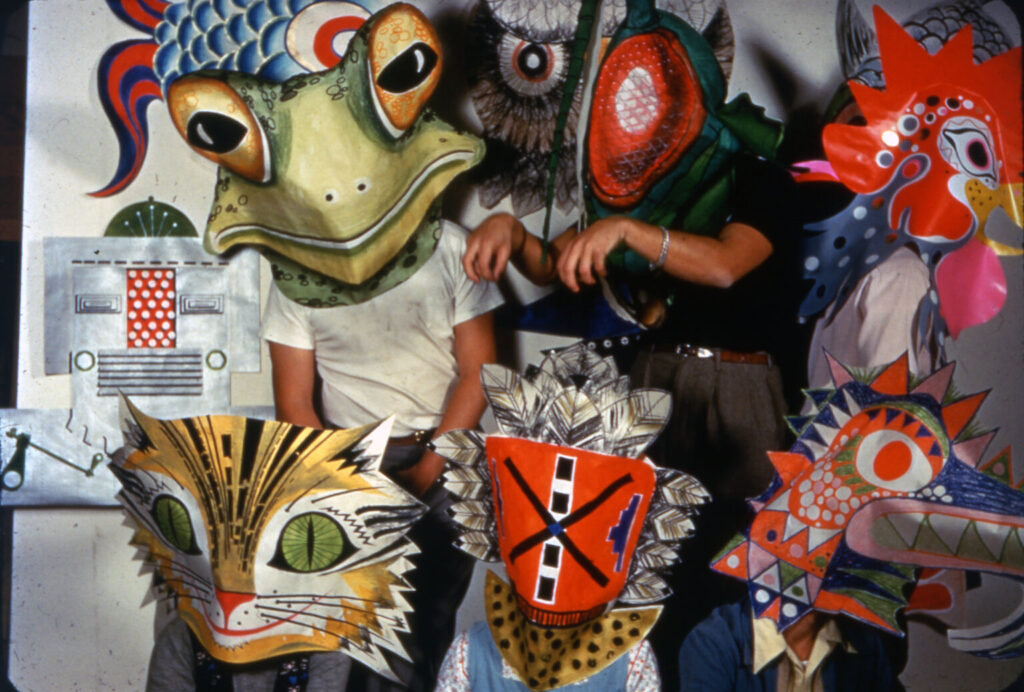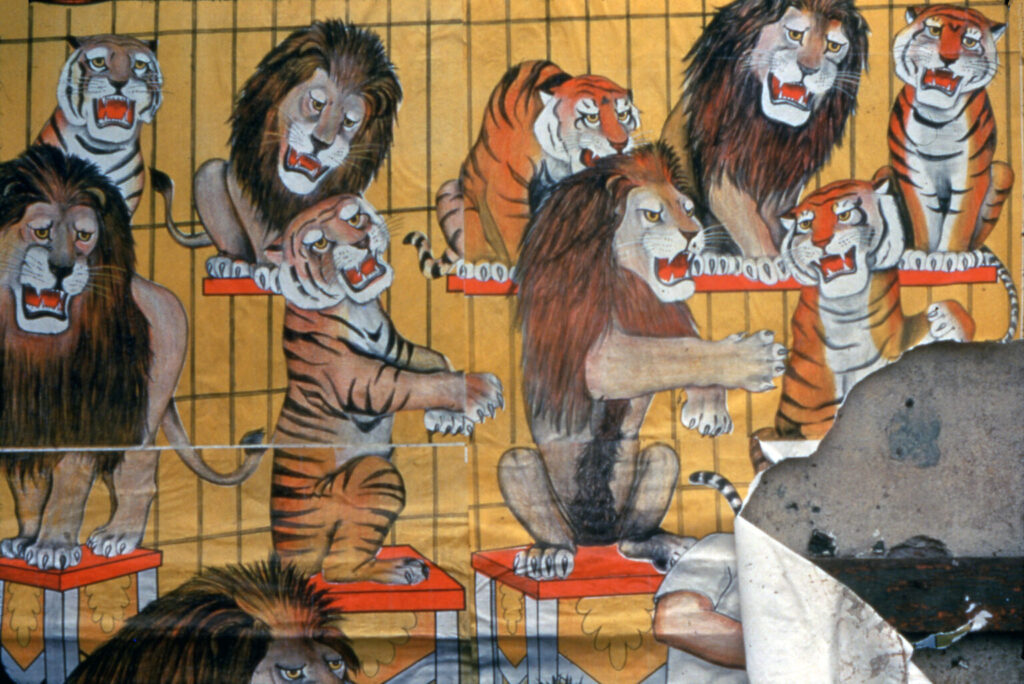As the Eameses aimed to solve the lifestyle needs of their most cherished relationships, they concluded that the general public would also benefit from the same designs. Charles admitted, “You design for someone in particular, and then you find out that other people have more in common with the object of your affection than you realized.” Here are four examples of today’s most coveted Eames designs and how they, surprisingly, came to fruition with a friend in mind.
1. Eames RAR (Rocking Armchair Rod Base)
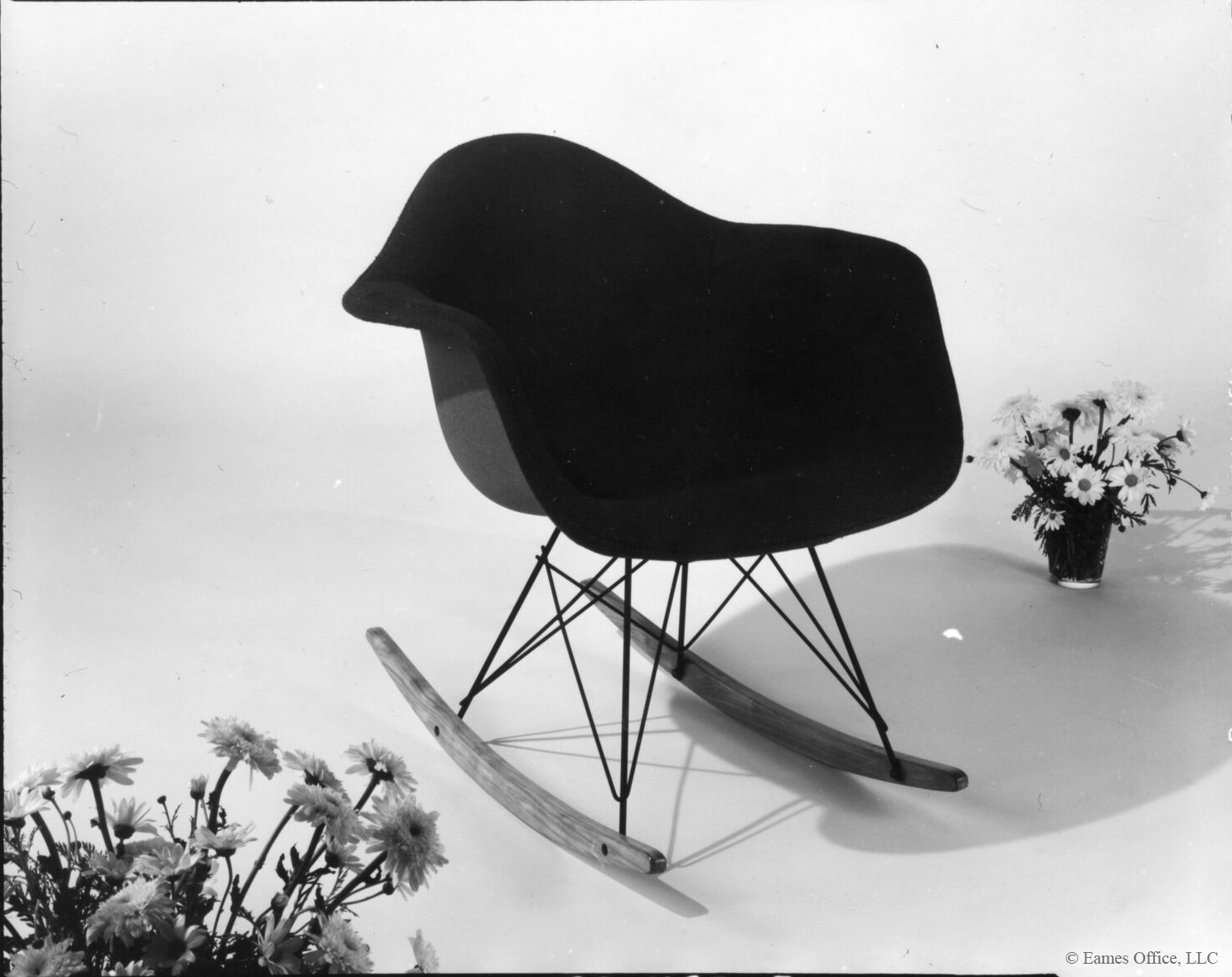
The molded fiberglass armchair transformed into an idea for a rocking chair when friends Alexander Knox and Doris Nolan, an actor and actress, were expecting a child. Adding a rocking base to the armchair meant that Alexander and Doris could sit comfortably while their child drifted to sleep in their arms and that the long-lasting piece of furniture could be passed down to the next generation. In an interview between historian Pat Kirkham and Ray Eames in 1988, Ray admitted, “Well—the baby was two years old by the time the chair was ready, but that was the original idea, the need of Doris for a rocking chair.”
2. The Eames Aluminum Group
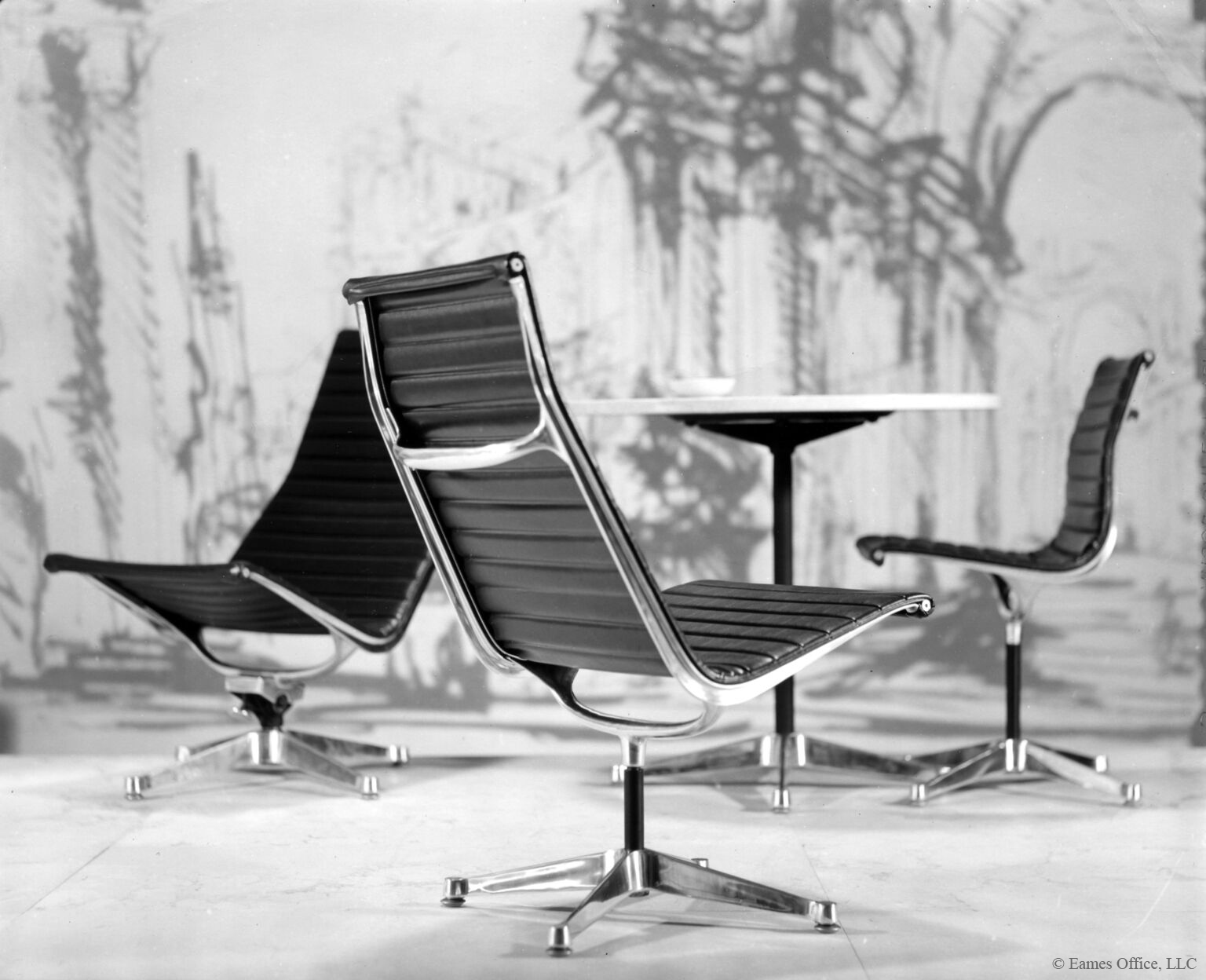
Alexander Girard, affectionately known as “Sandro” to the Eameses and his other close friends, was the Director of Design for the textile division at Herman Miller. A friendship with Girard and his wife Susan meant a shared appreciation for visuals, fruitful exchanges of ideas, an adoration of collecting, and many travels throughout the Southwestern United States. The Eames Aluminum Group Seating was born from Girard’s request for outdoor seating at the Eero Saarinen-designed J. Irwin Miller House in Columbus, Indiana in 1957. After experimenting with materials such as molded plywood, veneer, plastic, and wire in the 1940s and early ’50s, the Eames Office began casting aluminum into shapes conducive to maximum comfort for the human form. Aluminum proved to be a reliable material for consistent outdoor use and didn’t feel too formal or industrial for an indoor setting when paired with particular textiles. In turn, this material became the ideal solution for Girard and Saarinen’s project.
While trying to connect the chair’s use to the masses, Charles remarked that the Aluminum Group series was no longer a project solely for Girard’s client, but instead had become furniture for the common person who desired a comfortable place to rest after the end of a tough day. The Aluminum Group collection hit the market in 1958.
3. La Fonda
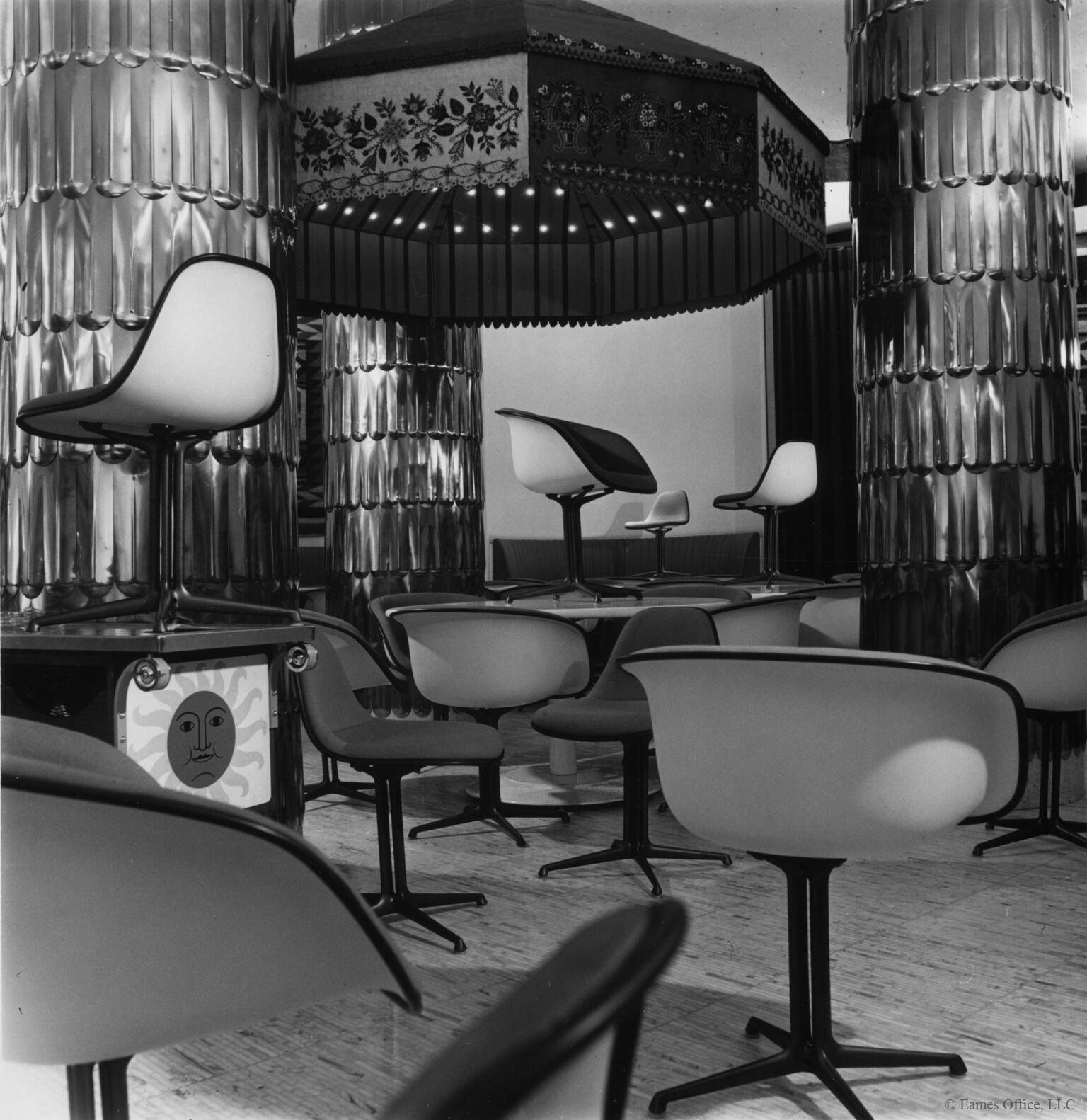
Girard commissioned the Eames Office to design another chair shortly after the Miller House project. This time, the setting would be for his newest restaurant, La Fonda del Sol, a Latin American-themed dining experience inside of the Time-Life Building in New York City. Alexander Girard: A Designer’s Universe describes the scenery as having “displays of toys and masks, Mexican pottery figures, Bolivian silverwork, Ecuadorian festival breads, and innumerable other artifacts” with “enough rooms to crowd half the population of Rio de Janeiro.”
Charles and Ray were able to modify pre-existing furniture forms and utilize their knowledge of materials to create the La Fonda design: a chair that isn’t too different from the molded fiberglass armchair with an identity catering to the color story and visuals of the restaurant. Girard asked for chairs with backs no higher than the dining tabletops. The rounded forms of the La Fonda shell allowed more guests to comfortably sit around each table. Charles and Ray developed new solid cast aluminum bases which appeared as four connected pillars branching outward into four feet at ground’s height and an exclusive upholstery system with an edge made of solid rubber. Soon after the project, the Eames Office offered upholstered fiberglass chairs with this new rubber-edge addition.
4. The Eames Chaise Lounge
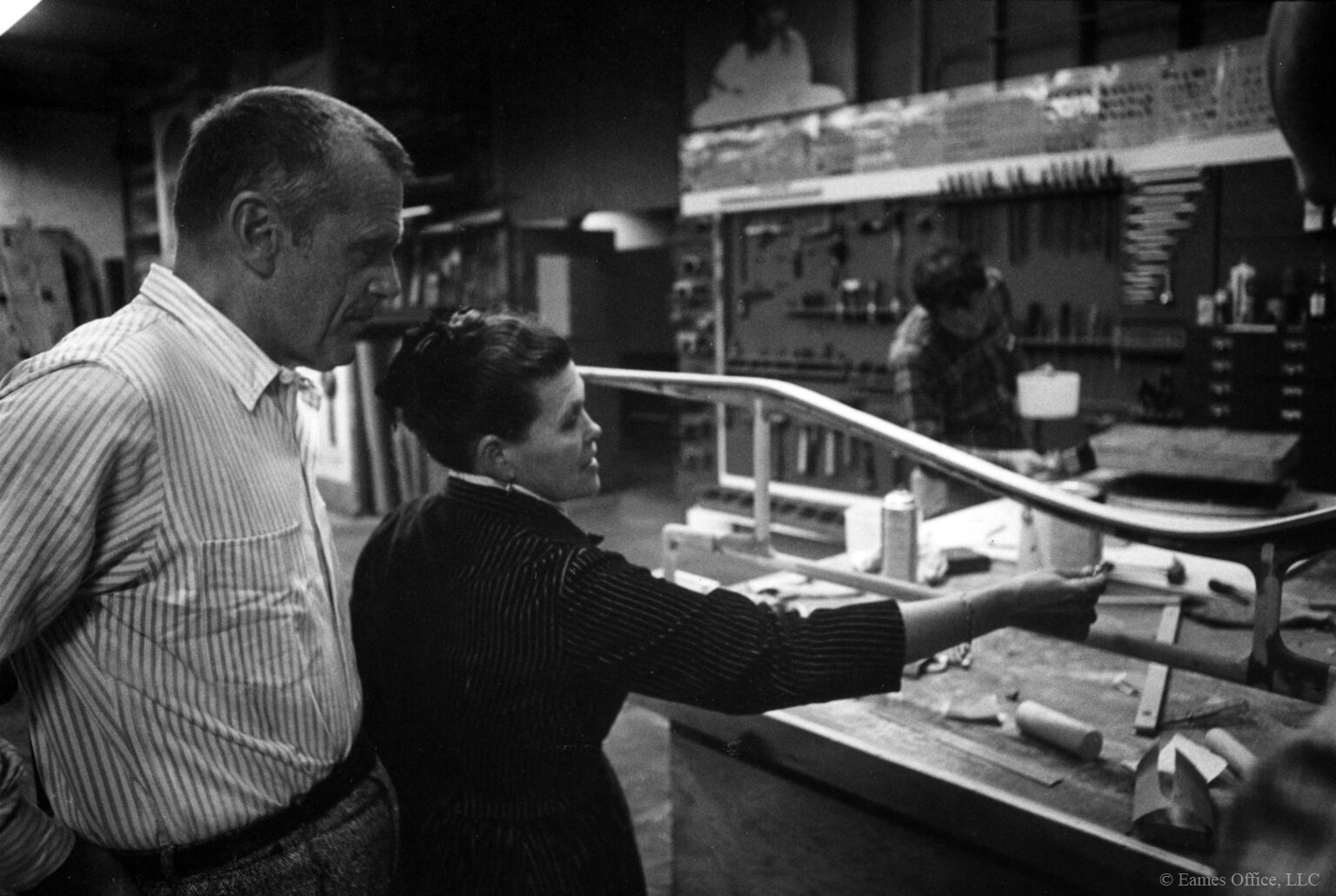
An indirect commission from Billy Wilder was inspired by the film director’s frequent, yet short, naps while on location or in his office. In order to keep his naps short, Wilder told Charles that he often rested upon a plank of wood (6 feet long by 1 foot wide) precariously supported by two sawhorses. Wilder would cross his arms as he drifted into sleep and would rely on his body to wake him as his arms fell to his side. With the motivation to create a more comfortable resting place for their dear friend, Charles and Ray began designing The Chaise, a cushioned, armless leather couch with a narrow, alarming dimension of only 17.5 inches. Wilder was ecstatic.
When approaching Herman Miller about the mass production of this design, colleagues at the Eames Office and Herman Miller alike urged the Eameses to alter the width to 24 inches. Staying true to the original design, it was manufactured in 18 inches but was slightly more tough to market to consumers than other Eames seating. However, it arguably remains as one of the most comfortable Eames designs created.
